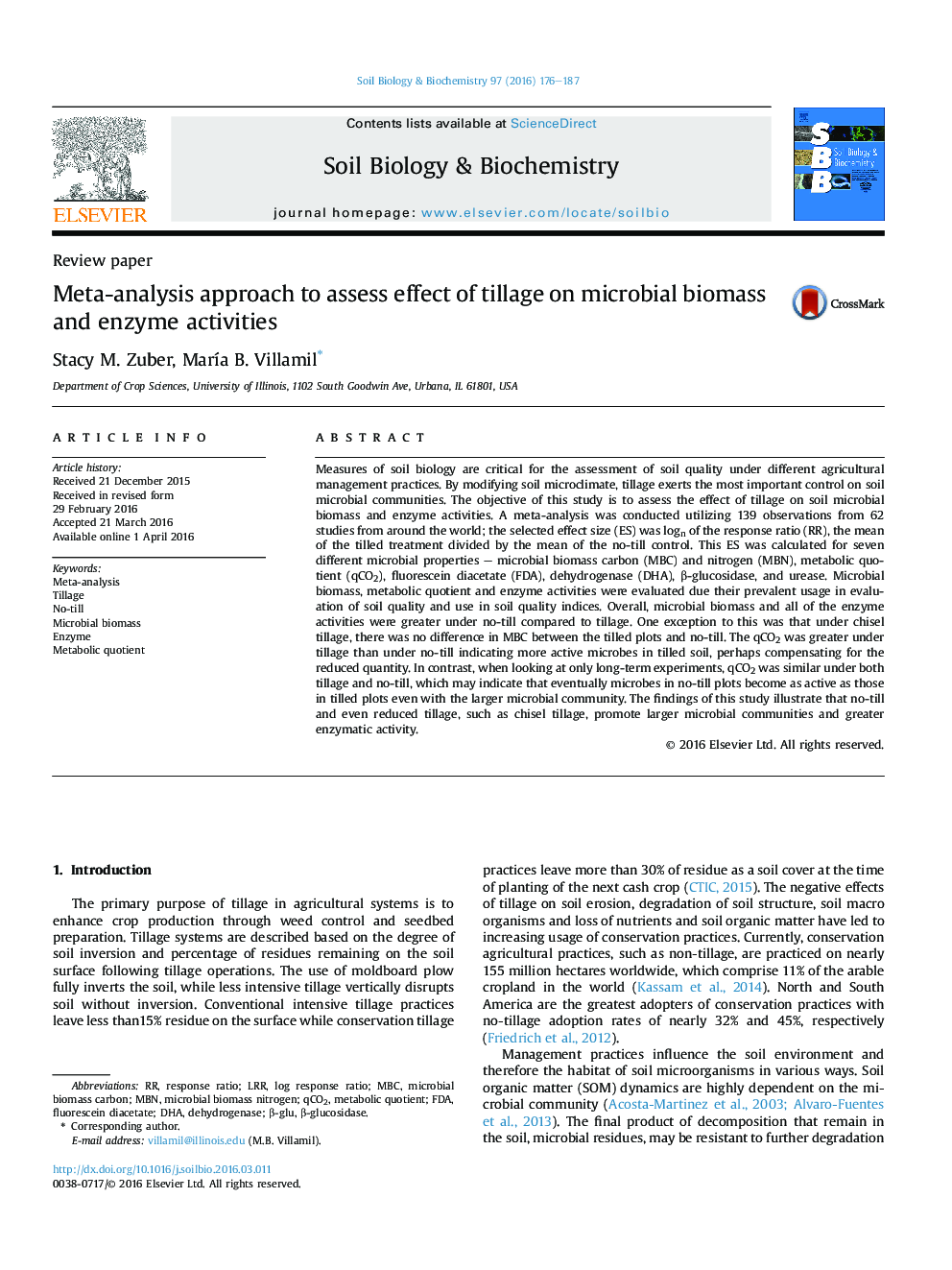| Article ID | Journal | Published Year | Pages | File Type |
|---|---|---|---|---|
| 2024332 | Soil Biology and Biochemistry | 2016 | 12 Pages |
Abstract
Measures of soil biology are critical for the assessment of soil quality under different agricultural management practices. By modifying soil microclimate, tillage exerts the most important control on soil microbial communities. The objective of this study is to assess the effect of tillage on soil microbial biomass and enzyme activities. A meta-analysis was conducted utilizing 139 observations from 62 studies from around the world; the selected effect size (ES) was logn of the response ratio (RR), the mean of the tilled treatment divided by the mean of the no-till control. This ES was calculated for seven different microbial properties - microbial biomass carbon (MBC) and nitrogen (MBN), metabolic quotient (qCO2), fluorescein diacetate (FDA), dehydrogenase (DHA), β-glucosidase, and urease. Microbial biomass, metabolic quotient and enzyme activities were evaluated due their prevalent usage in evaluation of soil quality and use in soil quality indices. Overall, microbial biomass and all of the enzyme activities were greater under no-till compared to tillage. One exception to this was that under chisel tillage, there was no difference in MBC between the tilled plots and no-till. The qCO2 was greater under tillage than under no-till indicating more active microbes in tilled soil, perhaps compensating for the reduced quantity. In contrast, when looking at only long-term experiments, qCO2 was similar under both tillage and no-till, which may indicate that eventually microbes in no-till plots become as active as those in tilled plots even with the larger microbial community. The findings of this study illustrate that no-till and even reduced tillage, such as chisel tillage, promote larger microbial communities and greater enzymatic activity.
Keywords
Related Topics
Life Sciences
Agricultural and Biological Sciences
Soil Science
Authors
Stacy M. Zuber, MarÃa B. Villamil,
